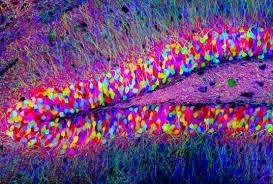Pearl Zhu's Blog, page 1438
May 7, 2015
Five Key Factors in Strategy Execution
Strategy and execution are interdependent, and they are not linear steps, but an iterative continuum.
 Strategy execution is difficult. A recent executive survey indicated that executional excellence was the number one challenge facing corporate leaders globally. Statistically, about two-thirds to three-quarters of large organizations struggle to implement their strategies. Why does strategy execution unravel, and what are the key factors to lead the effectiveness of strategy execution?
Strategy execution is difficult. A recent executive survey indicated that executional excellence was the number one challenge facing corporate leaders globally. Statistically, about two-thirds to three-quarters of large organizations struggle to implement their strategies. Why does strategy execution unravel, and what are the key factors to lead the effectiveness of strategy execution?
Communication is the KEY: For far too long we have been taught that strategic choices are determined at some off-site retreat and imposed on unsuspecting employees through communication, engagement and alignment tactics. This is hard work and bad work. Engaging employees in conversations on the preferred strategy (as a strategy-determination process) engenders inclusion and employee commitment when the final strategic imperatives are decided upon. People need to be communicated to, engaged and aligned after the strategy determination process. People must be engaged when the strategic choice is actually being made, not after. Implementation will then be a piece of cake. Regarding alignment, actions needed to achieve the strategy, or some part of it, it needs to be apparent in each manager's and each employee's performance plan. A good question to ask is, "how does this individual's performance contribute to achievement of some part of the strategy?" If it doesn't, misalignment of goals needs to be addressed, stratify down, aggregate up.
Setting priority right: It takes commitment and discipline to stay focused on the real priorities of the business instead of being distracted by what seems to be more urgent on any given day. The best way to find the balance between working on the business while doing business is to utilize the process - create a rhythm of meetings that establish clarity around the top priorities of the company, and then review those priorities on a regular basis. The key to success is for the team to hold each member accountable for doing their part and this is where many teams fail.
Strategy Execution don't go for perfect: One of the inhibitors to progress on strategy can be the view that nothing should be done until everything is lined up and all the fingers are crossed, and the whole concept of this is true at so many levels across the board. In practice, an unexpected result or potential "problem" or mistake, can be your greatest opportunity, and offers opportunity for growth. A real problem is when the same negative situation happens over and over despite resources and help being given and put in place. Punishing employees for every little thing that goes wrong just keeps your employees from trying anything without full permissions and total sign-offs and bogs down timelines and keeps your organization as mediocre at best.
Strategy Execution is a process: If we look at Strategy Execution as a process, and the question is whether progress is being made, then we are looking for "intermediate KPIs." Every Strategy should have a plan documenting what the organization will need to do. Since Strategy Execution mechanism is not a goal in itself, but a tool, its success should be measured by comparing actual performance of the organization with the expectations of the owners. Thereafter, Performance Management should review whether these activities have indeed been executed, and whether they have had the expected impact. Execution requires the leader to have the discipline and the courage to confront performance issues with individual team members and to resolve them on a timely basis. Otherwise, the Leader risks sending a message that says "mediocre performance is okay," which often times results in sluggish performance and derailment of the business.
 The leadership maturity and talent accountability: While communication is critical for success, accountability is also important, talent plays a role, but being realistic about the number of tactics is key to execution. Execution to no more than for critical tactics facilitates focus as well as momentum with the ability to execute cleanly and quickly. Hence, the maturity of the leadership team (not just the individuals, but the time the team has had working together), the alignment of the team around key initiatives and the team’s ability to prioritize those initiatives are all components of a successful execution capability.
The leadership maturity and talent accountability: While communication is critical for success, accountability is also important, talent plays a role, but being realistic about the number of tactics is key to execution. Execution to no more than for critical tactics facilitates focus as well as momentum with the ability to execute cleanly and quickly. Hence, the maturity of the leadership team (not just the individuals, but the time the team has had working together), the alignment of the team around key initiatives and the team’s ability to prioritize those initiatives are all components of a successful execution capability.
Strategy and execution are interdependent, and they are not linear steps, but an iterative continuum. Strategy is more important to keep business navigating through the transformation journey, but execution is more difficult due to its complexity, by leveraging the key factors listed above, businesses can cultivate overarching business capability, and build the culture of collaboration to manage strategy execution effectively and efficiently.Follow us at: @Pearl_Zhu
 Strategy execution is difficult. A recent executive survey indicated that executional excellence was the number one challenge facing corporate leaders globally. Statistically, about two-thirds to three-quarters of large organizations struggle to implement their strategies. Why does strategy execution unravel, and what are the key factors to lead the effectiveness of strategy execution?
Strategy execution is difficult. A recent executive survey indicated that executional excellence was the number one challenge facing corporate leaders globally. Statistically, about two-thirds to three-quarters of large organizations struggle to implement their strategies. Why does strategy execution unravel, and what are the key factors to lead the effectiveness of strategy execution?Communication is the KEY: For far too long we have been taught that strategic choices are determined at some off-site retreat and imposed on unsuspecting employees through communication, engagement and alignment tactics. This is hard work and bad work. Engaging employees in conversations on the preferred strategy (as a strategy-determination process) engenders inclusion and employee commitment when the final strategic imperatives are decided upon. People need to be communicated to, engaged and aligned after the strategy determination process. People must be engaged when the strategic choice is actually being made, not after. Implementation will then be a piece of cake. Regarding alignment, actions needed to achieve the strategy, or some part of it, it needs to be apparent in each manager's and each employee's performance plan. A good question to ask is, "how does this individual's performance contribute to achievement of some part of the strategy?" If it doesn't, misalignment of goals needs to be addressed, stratify down, aggregate up.
Setting priority right: It takes commitment and discipline to stay focused on the real priorities of the business instead of being distracted by what seems to be more urgent on any given day. The best way to find the balance between working on the business while doing business is to utilize the process - create a rhythm of meetings that establish clarity around the top priorities of the company, and then review those priorities on a regular basis. The key to success is for the team to hold each member accountable for doing their part and this is where many teams fail.
Strategy Execution don't go for perfect: One of the inhibitors to progress on strategy can be the view that nothing should be done until everything is lined up and all the fingers are crossed, and the whole concept of this is true at so many levels across the board. In practice, an unexpected result or potential "problem" or mistake, can be your greatest opportunity, and offers opportunity for growth. A real problem is when the same negative situation happens over and over despite resources and help being given and put in place. Punishing employees for every little thing that goes wrong just keeps your employees from trying anything without full permissions and total sign-offs and bogs down timelines and keeps your organization as mediocre at best.
Strategy Execution is a process: If we look at Strategy Execution as a process, and the question is whether progress is being made, then we are looking for "intermediate KPIs." Every Strategy should have a plan documenting what the organization will need to do. Since Strategy Execution mechanism is not a goal in itself, but a tool, its success should be measured by comparing actual performance of the organization with the expectations of the owners. Thereafter, Performance Management should review whether these activities have indeed been executed, and whether they have had the expected impact. Execution requires the leader to have the discipline and the courage to confront performance issues with individual team members and to resolve them on a timely basis. Otherwise, the Leader risks sending a message that says "mediocre performance is okay," which often times results in sluggish performance and derailment of the business.
 The leadership maturity and talent accountability: While communication is critical for success, accountability is also important, talent plays a role, but being realistic about the number of tactics is key to execution. Execution to no more than for critical tactics facilitates focus as well as momentum with the ability to execute cleanly and quickly. Hence, the maturity of the leadership team (not just the individuals, but the time the team has had working together), the alignment of the team around key initiatives and the team’s ability to prioritize those initiatives are all components of a successful execution capability.
The leadership maturity and talent accountability: While communication is critical for success, accountability is also important, talent plays a role, but being realistic about the number of tactics is key to execution. Execution to no more than for critical tactics facilitates focus as well as momentum with the ability to execute cleanly and quickly. Hence, the maturity of the leadership team (not just the individuals, but the time the team has had working together), the alignment of the team around key initiatives and the team’s ability to prioritize those initiatives are all components of a successful execution capability.Strategy and execution are interdependent, and they are not linear steps, but an iterative continuum. Strategy is more important to keep business navigating through the transformation journey, but execution is more difficult due to its complexity, by leveraging the key factors listed above, businesses can cultivate overarching business capability, and build the culture of collaboration to manage strategy execution effectively and efficiently.Follow us at: @Pearl_Zhu
Published on May 07, 2015 23:09
What does “the Democratization of Predictive Analytics” Mean
Analytics tools, just like many other digital technologies, shift from monolithic industrial mode to mosaic digital mode.
 Predictive Analytics (PA) is about applying quality data to forecast what will happen in the business. Analytics democratization as "making PA easy to use for many new user groups" is a good thing in many respects: First, it is just mandatory for Big Data becoming true mainstream. It also will help to increase the amount of domain level expertise that will be brought to use Big Data, and therefore speed up discovery of new facts in many domains, and also this democratization will help a new class of solutions, tools, and services to find a market. More specifically, what are the characteristics of the democratization of Predictive Analytics?
Predictive Analytics (PA) is about applying quality data to forecast what will happen in the business. Analytics democratization as "making PA easy to use for many new user groups" is a good thing in many respects: First, it is just mandatory for Big Data becoming true mainstream. It also will help to increase the amount of domain level expertise that will be brought to use Big Data, and therefore speed up discovery of new facts in many domains, and also this democratization will help a new class of solutions, tools, and services to find a market. More specifically, what are the characteristics of the democratization of Predictive Analytics?
Intuitive UI: With a good intuitive UI and clever use of algorithms in the back, you can enable a very good working environment for domain experts with some general reporting and statistics skills. In that sense, you will see advanced analytics capabilities becoming additional features.These tools will make it easier for business users to do "basic" analytics more easily and with larger and more complex data sets, etc. But this will only serve to grow the market for predictive analytics in general, which will mean more work for data scientists doing more heavy lifting in different areas. If you define a stable problem space for such an environment, could you even solve some of the feature generation and data preparation tasks for those users as part of an initial setup. This will limit them to work in a predefined problem space, which of course reduces the exposed complexity.
Analytic accretion: Some level of "analytic accretion" occurs in various verticals or domains to facilitate a sustainable open framework for predictive analytics; each will have to tune or determine prospective value. Predictive Analytics has interesting temporal parameters in achieving outcomes in verticals. It's going to get real interesting to see where the heavy lifting is going to occur. You will see more business user facing Advanced Analytics functionality, and that can be a good thing as long as you have a very defined problem space, prepare the respective data beforehand and focus on user driven result interpretation and usage instead of process automation.
 Self-service: Self-service BI and reporting is easy as well, if you have a good data model in place already. There is no Predictive Analyses without good data. It has never been so complex to achieve data integration and data quality as it is today where companies need to mix relational and semi/unstructured data. But talent is still the tool master. Instead of statisticians running out of work, it only becomes more clear that it was not the tools made the analyst, but the understanding of what the tools were doing. And better analysis tools allowed talent people to put their understanding of tools for better and more efficient use.
Self-service: Self-service BI and reporting is easy as well, if you have a good data model in place already. There is no Predictive Analyses without good data. It has never been so complex to achieve data integration and data quality as it is today where companies need to mix relational and semi/unstructured data. But talent is still the tool master. Instead of statisticians running out of work, it only becomes more clear that it was not the tools made the analyst, but the understanding of what the tools were doing. And better analysis tools allowed talent people to put their understanding of tools for better and more efficient use.
Analytics tools, just like many other digital technologies, shift from monolithic industrial mode to mosaic digital mode: from heavy to light weight; from full set of enterprise software to nimble consumerized application, from hard to use to user friendly, and the democratization of predictive analytics well reflects the nature of digital transformation, to make things better, faster and cheaper; and to make the work more purposeful, innovative and smarter.
Follow us at: @Pearl_Zhu
 Predictive Analytics (PA) is about applying quality data to forecast what will happen in the business. Analytics democratization as "making PA easy to use for many new user groups" is a good thing in many respects: First, it is just mandatory for Big Data becoming true mainstream. It also will help to increase the amount of domain level expertise that will be brought to use Big Data, and therefore speed up discovery of new facts in many domains, and also this democratization will help a new class of solutions, tools, and services to find a market. More specifically, what are the characteristics of the democratization of Predictive Analytics?
Predictive Analytics (PA) is about applying quality data to forecast what will happen in the business. Analytics democratization as "making PA easy to use for many new user groups" is a good thing in many respects: First, it is just mandatory for Big Data becoming true mainstream. It also will help to increase the amount of domain level expertise that will be brought to use Big Data, and therefore speed up discovery of new facts in many domains, and also this democratization will help a new class of solutions, tools, and services to find a market. More specifically, what are the characteristics of the democratization of Predictive Analytics?
Intuitive UI: With a good intuitive UI and clever use of algorithms in the back, you can enable a very good working environment for domain experts with some general reporting and statistics skills. In that sense, you will see advanced analytics capabilities becoming additional features.These tools will make it easier for business users to do "basic" analytics more easily and with larger and more complex data sets, etc. But this will only serve to grow the market for predictive analytics in general, which will mean more work for data scientists doing more heavy lifting in different areas. If you define a stable problem space for such an environment, could you even solve some of the feature generation and data preparation tasks for those users as part of an initial setup. This will limit them to work in a predefined problem space, which of course reduces the exposed complexity.
Analytic accretion: Some level of "analytic accretion" occurs in various verticals or domains to facilitate a sustainable open framework for predictive analytics; each will have to tune or determine prospective value. Predictive Analytics has interesting temporal parameters in achieving outcomes in verticals. It's going to get real interesting to see where the heavy lifting is going to occur. You will see more business user facing Advanced Analytics functionality, and that can be a good thing as long as you have a very defined problem space, prepare the respective data beforehand and focus on user driven result interpretation and usage instead of process automation.
 Self-service: Self-service BI and reporting is easy as well, if you have a good data model in place already. There is no Predictive Analyses without good data. It has never been so complex to achieve data integration and data quality as it is today where companies need to mix relational and semi/unstructured data. But talent is still the tool master. Instead of statisticians running out of work, it only becomes more clear that it was not the tools made the analyst, but the understanding of what the tools were doing. And better analysis tools allowed talent people to put their understanding of tools for better and more efficient use.
Self-service: Self-service BI and reporting is easy as well, if you have a good data model in place already. There is no Predictive Analyses without good data. It has never been so complex to achieve data integration and data quality as it is today where companies need to mix relational and semi/unstructured data. But talent is still the tool master. Instead of statisticians running out of work, it only becomes more clear that it was not the tools made the analyst, but the understanding of what the tools were doing. And better analysis tools allowed talent people to put their understanding of tools for better and more efficient use.Analytics tools, just like many other digital technologies, shift from monolithic industrial mode to mosaic digital mode: from heavy to light weight; from full set of enterprise software to nimble consumerized application, from hard to use to user friendly, and the democratization of predictive analytics well reflects the nature of digital transformation, to make things better, faster and cheaper; and to make the work more purposeful, innovative and smarter.
Follow us at: @Pearl_Zhu
Published on May 07, 2015 09:32
Digital Master Tuning #83: Is Digital Disruption the Ultimate Motivation to Change
With change, it comes with new innovations.
 It is true that fast moving digital technology makes lots of new things possible. And lots of the new things that happen appear and disappear just as fast as Summer rains. The digital shift can be disruptive, but it can also be from smaller, "tipping point" changes. Ultimately, is digital disruption the business motivation to change?
It is true that fast moving digital technology makes lots of new things possible. And lots of the new things that happen appear and disappear just as fast as Summer rains. The digital shift can be disruptive, but it can also be from smaller, "tipping point" changes. Ultimately, is digital disruption the business motivation to change?
Change upwards with planning: Change can be an opportunity, but at the end of the day, it needs to be all about moving the business numbers upwards. Although we have to change with the "tide," we have to stand firm on our principles which would guide us in our decisions and how we relate to others. Change is inevitable, but we must know how far to bend. We have to engage our sixth sense to decipher when to make change, and to discern what to throw out and what to keep. But most important of all, we need to have a plan. Set out goals and work at them in a systematic way. Setting timelines, and sometimes resetting those timelines. Because we are not perfect and even our plans will need modification due to unforeseen obstacles. Further, if you want meaningful change in an organization, it will not really happen until you get buy-in and sponsorship from senior management. Without this, you will get chaos and some temporary change, but not change that moves the business forward!
The classic transformation metaphor: The renowned metaphor of the caterpillar that becomes a butterfly demonstrates the digital transformation beautifully. As the caterpillar begins the process it still has mobility and more than less its qualities of being a caterpillar. As the process continues "being a caterpillar" is disrupted, and the following parts of the process that produce the butterfly begin. The caterpillar becomes totally dysfunctional and can not be recognized as a caterpillar any longer, only then can the butterfly emerge. Disruption allows for "new" energy to flow and bring with it something that would not be born without it.
Talent Management Analytics: Analytics just means asking interesting questions to produce new insights which help navigate through change journey. The amount of data being captured nowadays is exploding and as such those who filter "useful from useless" data most efficiently will regain control. Unfortunately, many HR practitioners consider “data” to be a four-letter word and thus to be avoided. Even more unfortunately, some HR practitioners have decided that lots of data is good to have and are expecting employees to provide it without considering what time that takes out of the working day or even what HR is going to do with the data once it is to hand. You need smart maths geeks to help make it work, but you need to be brave enough to ask the questions like:
- how do we know for sure our training makes a difference to peoples' performance?
-how do we know for sure the people we call 'talent' are really that special?-
-how do we know we are eliminating unconscious bias at interview?
- how do we know our online application tools aren't filtering out precisely the kind of new thinking that could reinvigorate our business?
 The adaptation of digital professionals: The only constant in life nowadays is "change." How we as individuals and businesses adapt to changes defines how successful we will ultimately be. It is very true that unless there is a disruption, people very rarely move out of their comfort zones. Growth is not possible unless we are willing to move out of our comfort zone. Hence, disruption acts as a catalyst in growth by pushing us out of our comfort zones. The qualities of digital professionals today include, but not limited to (1) Global leadership (2) collaborative problem solving and team-working, (3) Digital Literacy (4) Communication (5) Emotional intelligence (6) Entrepreneurship, Knowledge, Skills, Attitudes, Values and Ethics are components for the realization of the future.
The adaptation of digital professionals: The only constant in life nowadays is "change." How we as individuals and businesses adapt to changes defines how successful we will ultimately be. It is very true that unless there is a disruption, people very rarely move out of their comfort zones. Growth is not possible unless we are willing to move out of our comfort zone. Hence, disruption acts as a catalyst in growth by pushing us out of our comfort zones. The qualities of digital professionals today include, but not limited to (1) Global leadership (2) collaborative problem solving and team-working, (3) Digital Literacy (4) Communication (5) Emotional intelligence (6) Entrepreneurship, Knowledge, Skills, Attitudes, Values and Ethics are components for the realization of the future.
All in all, change is good and we must embrace and adapt to it, because with change comes new innovations. If you have a good change strategy in place, and adaptability to change, you can ride above the change curve, and make caterpillar-butterfly like digital transformation in elegant way.
Digitalization is like a flywheel, and Digital Masters are the one riding above it. Surf more Information about Digital Master:Digital Master Kindle Version Book Order URLDigital Master Book URLDigital Master Author URLDigital Master Video Clip on YouTubeDigital Master Fun Quiz
Follow us at: @Pearl_Zhu
 It is true that fast moving digital technology makes lots of new things possible. And lots of the new things that happen appear and disappear just as fast as Summer rains. The digital shift can be disruptive, but it can also be from smaller, "tipping point" changes. Ultimately, is digital disruption the business motivation to change?
It is true that fast moving digital technology makes lots of new things possible. And lots of the new things that happen appear and disappear just as fast as Summer rains. The digital shift can be disruptive, but it can also be from smaller, "tipping point" changes. Ultimately, is digital disruption the business motivation to change?
Change upwards with planning: Change can be an opportunity, but at the end of the day, it needs to be all about moving the business numbers upwards. Although we have to change with the "tide," we have to stand firm on our principles which would guide us in our decisions and how we relate to others. Change is inevitable, but we must know how far to bend. We have to engage our sixth sense to decipher when to make change, and to discern what to throw out and what to keep. But most important of all, we need to have a plan. Set out goals and work at them in a systematic way. Setting timelines, and sometimes resetting those timelines. Because we are not perfect and even our plans will need modification due to unforeseen obstacles. Further, if you want meaningful change in an organization, it will not really happen until you get buy-in and sponsorship from senior management. Without this, you will get chaos and some temporary change, but not change that moves the business forward!
The classic transformation metaphor: The renowned metaphor of the caterpillar that becomes a butterfly demonstrates the digital transformation beautifully. As the caterpillar begins the process it still has mobility and more than less its qualities of being a caterpillar. As the process continues "being a caterpillar" is disrupted, and the following parts of the process that produce the butterfly begin. The caterpillar becomes totally dysfunctional and can not be recognized as a caterpillar any longer, only then can the butterfly emerge. Disruption allows for "new" energy to flow and bring with it something that would not be born without it.
Talent Management Analytics: Analytics just means asking interesting questions to produce new insights which help navigate through change journey. The amount of data being captured nowadays is exploding and as such those who filter "useful from useless" data most efficiently will regain control. Unfortunately, many HR practitioners consider “data” to be a four-letter word and thus to be avoided. Even more unfortunately, some HR practitioners have decided that lots of data is good to have and are expecting employees to provide it without considering what time that takes out of the working day or even what HR is going to do with the data once it is to hand. You need smart maths geeks to help make it work, but you need to be brave enough to ask the questions like:
- how do we know for sure our training makes a difference to peoples' performance?
-how do we know for sure the people we call 'talent' are really that special?-
-how do we know we are eliminating unconscious bias at interview?
- how do we know our online application tools aren't filtering out precisely the kind of new thinking that could reinvigorate our business?
 The adaptation of digital professionals: The only constant in life nowadays is "change." How we as individuals and businesses adapt to changes defines how successful we will ultimately be. It is very true that unless there is a disruption, people very rarely move out of their comfort zones. Growth is not possible unless we are willing to move out of our comfort zone. Hence, disruption acts as a catalyst in growth by pushing us out of our comfort zones. The qualities of digital professionals today include, but not limited to (1) Global leadership (2) collaborative problem solving and team-working, (3) Digital Literacy (4) Communication (5) Emotional intelligence (6) Entrepreneurship, Knowledge, Skills, Attitudes, Values and Ethics are components for the realization of the future.
The adaptation of digital professionals: The only constant in life nowadays is "change." How we as individuals and businesses adapt to changes defines how successful we will ultimately be. It is very true that unless there is a disruption, people very rarely move out of their comfort zones. Growth is not possible unless we are willing to move out of our comfort zone. Hence, disruption acts as a catalyst in growth by pushing us out of our comfort zones. The qualities of digital professionals today include, but not limited to (1) Global leadership (2) collaborative problem solving and team-working, (3) Digital Literacy (4) Communication (5) Emotional intelligence (6) Entrepreneurship, Knowledge, Skills, Attitudes, Values and Ethics are components for the realization of the future. All in all, change is good and we must embrace and adapt to it, because with change comes new innovations. If you have a good change strategy in place, and adaptability to change, you can ride above the change curve, and make caterpillar-butterfly like digital transformation in elegant way.
Digitalization is like a flywheel, and Digital Masters are the one riding above it. Surf more Information about Digital Master:Digital Master Kindle Version Book Order URLDigital Master Book URLDigital Master Author URLDigital Master Video Clip on YouTubeDigital Master Fun Quiz
Follow us at: @Pearl_Zhu
Published on May 07, 2015 09:16
Agile Principle Digging Through: Is Document still Valuable?
Build a good quality product and create sufficient documentation, but don't focus on making the document super flashy.
 One of the important points in Agile Manifesto is "Working software over comprehensive documentation". So according to this, the product is given more priority than documentation, but do we still need documents? By stating explicitly that we value the working software rather than the documentation, we will now question whether the documentation is valuable.
One of the important points in Agile Manifesto is "Working software over comprehensive documentation". So according to this, the product is given more priority than documentation, but do we still need documents? By stating explicitly that we value the working software rather than the documentation, we will now question whether the documentation is valuable.
Agile doesn't say “don't build documents.” It says priority is first a working software then you can document it. A flashy document doesn't replace a working software. Hence, most of the documentation that you traditionally created is "needed" because you discovered the information it contained a long time before you needed to use that information. If instead, you tailor the process so information is discovered or decided just in time for it to be used, then that information doesn't need to be written down except as the code or the tests for which you need to know those facts. Producing working software is a very preliminary requirement to a development team under any methodology: either Agile or waterfall and so on. There exist no methodology in favor of comprehensive documentation over working software. With respect to the question of documentation, the distinction is that when working very small fragments to completion, you can hold the information in the mind; it is created or discovered just in time, within minutes at most, to be used. It doesn't need to be recorded for use later. But there's a limit to how much you can hold in your mind current, before things start slipping out. If you try to work on larger chunks, you start to need to write things down.
Comprehensive documentation is needed, but you have to give priority to working software than documentation.The essence is that if you can create working software that the customer would value, do it. It's the best thing you can do. If you need documentation as part of what you do to create working software that the customer would value, then you would value that documentation. While Agile emphasizes on working codes and working software, and encourage small up front design, and design through evolution in iterations, It does not means rushing to coding with no design documentation. Comprehensive documentation means the documentation in Waterfall style. From certain point of view, documentation in Agile should be more comprehensive, since the document is not so easily out of sync with the reality, as its waterfall counterpart did. For examples, user stories, issues, schema files, UML diagrams on paper or in modeling tool etc. are all documentation.
 Sometimes the alternative (rediscovering if and when information is needed) is genuinely a more effective and efficient approach. These days the typical documentation is very slim and geared toward telling people who might need to reconstruct information where to start looking. That problem is usually owing to a lack of feedback - where developers don't get feedback on where they went wrong, they will get ever better at doing what they think is right without ever having the incorrect parts of their thinking challenged and improved. They get ever better at what they do, but they never get better at what they never do, and there are parts of the job they never do. While "working software over comprehensive documentation" is good against waste, the line of producing "enough" documents is whether the documentation helps developing "working software" and subsequent maintenance. Remember, no matter how smart and knowledgeable you are, or how many brain cells you have, your brain is still tiny in front of complicated problems today and complex structures you are going to build. Enough documentation in Agile forms is complementing our tiny flesh brains.
Sometimes the alternative (rediscovering if and when information is needed) is genuinely a more effective and efficient approach. These days the typical documentation is very slim and geared toward telling people who might need to reconstruct information where to start looking. That problem is usually owing to a lack of feedback - where developers don't get feedback on where they went wrong, they will get ever better at doing what they think is right without ever having the incorrect parts of their thinking challenged and improved. They get ever better at what they do, but they never get better at what they never do, and there are parts of the job they never do. While "working software over comprehensive documentation" is good against waste, the line of producing "enough" documents is whether the documentation helps developing "working software" and subsequent maintenance. Remember, no matter how smart and knowledgeable you are, or how many brain cells you have, your brain is still tiny in front of complicated problems today and complex structures you are going to build. Enough documentation in Agile forms is complementing our tiny flesh brains.
Build a good quality product and create sufficient documentation, but don't focus on making the document super flashy. Focus on making your software working well to satisfy customers. That's the essential of these Agile principle.Follow us at: @Pearl_Zhu
 One of the important points in Agile Manifesto is "Working software over comprehensive documentation". So according to this, the product is given more priority than documentation, but do we still need documents? By stating explicitly that we value the working software rather than the documentation, we will now question whether the documentation is valuable.
One of the important points in Agile Manifesto is "Working software over comprehensive documentation". So according to this, the product is given more priority than documentation, but do we still need documents? By stating explicitly that we value the working software rather than the documentation, we will now question whether the documentation is valuable.
Agile doesn't say “don't build documents.” It says priority is first a working software then you can document it. A flashy document doesn't replace a working software. Hence, most of the documentation that you traditionally created is "needed" because you discovered the information it contained a long time before you needed to use that information. If instead, you tailor the process so information is discovered or decided just in time for it to be used, then that information doesn't need to be written down except as the code or the tests for which you need to know those facts. Producing working software is a very preliminary requirement to a development team under any methodology: either Agile or waterfall and so on. There exist no methodology in favor of comprehensive documentation over working software. With respect to the question of documentation, the distinction is that when working very small fragments to completion, you can hold the information in the mind; it is created or discovered just in time, within minutes at most, to be used. It doesn't need to be recorded for use later. But there's a limit to how much you can hold in your mind current, before things start slipping out. If you try to work on larger chunks, you start to need to write things down.
Comprehensive documentation is needed, but you have to give priority to working software than documentation.The essence is that if you can create working software that the customer would value, do it. It's the best thing you can do. If you need documentation as part of what you do to create working software that the customer would value, then you would value that documentation. While Agile emphasizes on working codes and working software, and encourage small up front design, and design through evolution in iterations, It does not means rushing to coding with no design documentation. Comprehensive documentation means the documentation in Waterfall style. From certain point of view, documentation in Agile should be more comprehensive, since the document is not so easily out of sync with the reality, as its waterfall counterpart did. For examples, user stories, issues, schema files, UML diagrams on paper or in modeling tool etc. are all documentation.
 Sometimes the alternative (rediscovering if and when information is needed) is genuinely a more effective and efficient approach. These days the typical documentation is very slim and geared toward telling people who might need to reconstruct information where to start looking. That problem is usually owing to a lack of feedback - where developers don't get feedback on where they went wrong, they will get ever better at doing what they think is right without ever having the incorrect parts of their thinking challenged and improved. They get ever better at what they do, but they never get better at what they never do, and there are parts of the job they never do. While "working software over comprehensive documentation" is good against waste, the line of producing "enough" documents is whether the documentation helps developing "working software" and subsequent maintenance. Remember, no matter how smart and knowledgeable you are, or how many brain cells you have, your brain is still tiny in front of complicated problems today and complex structures you are going to build. Enough documentation in Agile forms is complementing our tiny flesh brains.
Sometimes the alternative (rediscovering if and when information is needed) is genuinely a more effective and efficient approach. These days the typical documentation is very slim and geared toward telling people who might need to reconstruct information where to start looking. That problem is usually owing to a lack of feedback - where developers don't get feedback on where they went wrong, they will get ever better at doing what they think is right without ever having the incorrect parts of their thinking challenged and improved. They get ever better at what they do, but they never get better at what they never do, and there are parts of the job they never do. While "working software over comprehensive documentation" is good against waste, the line of producing "enough" documents is whether the documentation helps developing "working software" and subsequent maintenance. Remember, no matter how smart and knowledgeable you are, or how many brain cells you have, your brain is still tiny in front of complicated problems today and complex structures you are going to build. Enough documentation in Agile forms is complementing our tiny flesh brains.Build a good quality product and create sufficient documentation, but don't focus on making the document super flashy. Focus on making your software working well to satisfy customers. That's the essential of these Agile principle.Follow us at: @Pearl_Zhu
Published on May 07, 2015 09:04
May 3, 2015
An Inspirational Mind
While inspiration is not the same as effort, effort is an essential condition for inspiration.
 In a culture obsessed with measuring short term result or quick win, we often overlook the important role of inspiration-the inner driver to pursue meaning or achieve big. Where does inspiration come from? Internal or external, heart or brain; push or pull; feeling or discipline?
In a culture obsessed with measuring short term result or quick win, we often overlook the important role of inspiration-the inner driver to pursue meaning or achieve big. Where does inspiration come from? Internal or external, heart or brain; push or pull; feeling or discipline?
Inspiration shapes a high-level view: It involves a bigger perspective and a longer range view. It perceives the future. Inspiration awakens us to new possibilities by allowing us to transcend our ordinary experiences and limitations. Inspiration propels a person from apathy to possibility; from sympathy to empathy, and transforms the way we perceive one’s unleashed potential and better future of human society.
inspiration is to provoke deep thinking: Nothing truly great can happen without it. It is the critical catalyst which drives us. We do our very best work when we are inspired and without it, the most mundane of tasks seem complex and insurmountable. Inspiration is the result of moments of insight. Without insight (sometimes a sudden flash of understanding which illuminates the pattern), there’s no significant progress can be made. Work and persistence matter; without these, we would never come across new ideas and thoughts at all. But much more important thing is the ability to be open, and the ability to make unusual connections.
Inspiration is the key driver to creativity: It means that we are at the most creative status when we are get inspired. It's also the source of developing "ability" and with it also comes the energy to drive and accomplish which has inspired you. Inspiration is a key component of internal “driver,” the only way of finding the limits of the possible is by going beyond them into the impossible, this can be brought only by inspiration. Inspiration is like the glue: Inspiration matters because it is the glue to make talent, hard work, ideas, and dreams to become reality and make all that count! Inspiration is best thought of as a surprising interaction between your current knowledge and the information you receive from the world. There are things you can do to increase the likelihood of inspiration occurring. Research shows quite clearly that preparation (“work mastery”) is a key ingredient. While inspiration is not the same as effort, effort is an essential condition for inspiration, preparing the mind for an inspirational experience. Openness to experience and positive affect are also important, as having an open mind and approach-oriented attitude will make it more likely that you will be aware of the inspiration once it arrive.
Inspiration is like the glue: Inspiration matters because it is the glue to make talent, hard work, ideas, and dreams to become reality and make all that count! Inspiration is best thought of as a surprising interaction between your current knowledge and the information you receive from the world. There are things you can do to increase the likelihood of inspiration occurring. Research shows quite clearly that preparation (“work mastery”) is a key ingredient. While inspiration is not the same as effort, effort is an essential condition for inspiration, preparing the mind for an inspirational experience. Openness to experience and positive affect are also important, as having an open mind and approach-oriented attitude will make it more likely that you will be aware of the inspiration once it arrive.
Inspiration is a feeling that is more transient and much harder to influence. Inspiration creates synergy in strengthening positive thinking and influencing. Inspiration the is key in leading digital transformation journey.Follow us at: @Pearl_Zhu
 In a culture obsessed with measuring short term result or quick win, we often overlook the important role of inspiration-the inner driver to pursue meaning or achieve big. Where does inspiration come from? Internal or external, heart or brain; push or pull; feeling or discipline?
In a culture obsessed with measuring short term result or quick win, we often overlook the important role of inspiration-the inner driver to pursue meaning or achieve big. Where does inspiration come from? Internal or external, heart or brain; push or pull; feeling or discipline?
Inspiration shapes a high-level view: It involves a bigger perspective and a longer range view. It perceives the future. Inspiration awakens us to new possibilities by allowing us to transcend our ordinary experiences and limitations. Inspiration propels a person from apathy to possibility; from sympathy to empathy, and transforms the way we perceive one’s unleashed potential and better future of human society.
inspiration is to provoke deep thinking: Nothing truly great can happen without it. It is the critical catalyst which drives us. We do our very best work when we are inspired and without it, the most mundane of tasks seem complex and insurmountable. Inspiration is the result of moments of insight. Without insight (sometimes a sudden flash of understanding which illuminates the pattern), there’s no significant progress can be made. Work and persistence matter; without these, we would never come across new ideas and thoughts at all. But much more important thing is the ability to be open, and the ability to make unusual connections.
Inspiration is the key driver to creativity: It means that we are at the most creative status when we are get inspired. It's also the source of developing "ability" and with it also comes the energy to drive and accomplish which has inspired you. Inspiration is a key component of internal “driver,” the only way of finding the limits of the possible is by going beyond them into the impossible, this can be brought only by inspiration.
 Inspiration is like the glue: Inspiration matters because it is the glue to make talent, hard work, ideas, and dreams to become reality and make all that count! Inspiration is best thought of as a surprising interaction between your current knowledge and the information you receive from the world. There are things you can do to increase the likelihood of inspiration occurring. Research shows quite clearly that preparation (“work mastery”) is a key ingredient. While inspiration is not the same as effort, effort is an essential condition for inspiration, preparing the mind for an inspirational experience. Openness to experience and positive affect are also important, as having an open mind and approach-oriented attitude will make it more likely that you will be aware of the inspiration once it arrive.
Inspiration is like the glue: Inspiration matters because it is the glue to make talent, hard work, ideas, and dreams to become reality and make all that count! Inspiration is best thought of as a surprising interaction between your current knowledge and the information you receive from the world. There are things you can do to increase the likelihood of inspiration occurring. Research shows quite clearly that preparation (“work mastery”) is a key ingredient. While inspiration is not the same as effort, effort is an essential condition for inspiration, preparing the mind for an inspirational experience. Openness to experience and positive affect are also important, as having an open mind and approach-oriented attitude will make it more likely that you will be aware of the inspiration once it arrive.Inspiration is a feeling that is more transient and much harder to influence. Inspiration creates synergy in strengthening positive thinking and influencing. Inspiration the is key in leading digital transformation journey.Follow us at: @Pearl_Zhu
Published on May 03, 2015 23:27
Deep Learning for Object Recognition
The best Deep Learning Algorithm has to be the one that has the most reliable performance.
 “Deep Learning is a new area of Machine Learning research, which has been introduced with the objective of moving Machine Learning closer to one of its original goals: Artificial Intelligence.” (deeplearning.net). What about the types of different objects to be recognized? Are they static or in motion, what’re the toughest challenges in Deep Learning, and how to select the best “deep learning” algorithm to improve the performance?
“Deep Learning is a new area of Machine Learning research, which has been introduced with the objective of moving Machine Learning closer to one of its original goals: Artificial Intelligence.” (deeplearning.net). What about the types of different objects to be recognized? Are they static or in motion, what’re the toughest challenges in Deep Learning, and how to select the best “deep learning” algorithm to improve the performance?
Generalized object identification is being the hardest. Some organizations have achieved human level performance at analyzing images. They are getting close in video and voice. Some companies are using deep learning to extract personality traits from video with reasonable accuracy. You need to use very large data sets to train for images. In some cases, they have to use about 30,000 pictures of faces in order to have proper generalization and avoid overfitting. Furthermore, you need some extra tricks, like rotations and distortions. If your problem is unsupervised, then you may need much more data: hundreds of thousands of examples. But that depend a lot of the task you want to solve, generalized object identification being the hardest.
Set criteria to select the best algorithm for reliable performance: When look at the psychometric methods and what uncertainty in the form of error bars might be present in the predictions? There is no doubt that eventually an algorithm will beat human performance, but the problem is that there are now many different "deep learning" algorithms. And, each of these "deep learning" neural networks is a different algorithm in many details. So, it assumes that these different algorithms would give different performance under many scenarios. Which algorithm is the one that you should trust? It has to be the one that has the most reliable performance.
 There are still many arguments going on in Deep Learning algorithm research: How can any algorithm reflect what is going on in real neural networks when it takes an enormously large sample of learning trials, whereas real neural networks in primates show novel object recognition with very few learning trials? The claim from academics that "neural networks" were actually modeling the brain and so were beating or would soon beat human or primate performance is nothing new. But the problem is that each neural network algorithm published by these academics is a different algorithm and doesn't show the small sample learning in real neurons. How can each algorithm be a reflection of real neural networks when each is a different algorithm? For that reason, it is very important to see their research methods and whether appropriate blinding of modelers was used, etc.
There are still many arguments going on in Deep Learning algorithm research: How can any algorithm reflect what is going on in real neural networks when it takes an enormously large sample of learning trials, whereas real neural networks in primates show novel object recognition with very few learning trials? The claim from academics that "neural networks" were actually modeling the brain and so were beating or would soon beat human or primate performance is nothing new. But the problem is that each neural network algorithm published by these academics is a different algorithm and doesn't show the small sample learning in real neurons. How can each algorithm be a reflection of real neural networks when each is a different algorithm? For that reason, it is very important to see their research methods and whether appropriate blinding of modelers was used, etc.
Deep learning is part of a broader concept of machine learning methods based on learning representation of data. It’s still an emergent arena in machine intelligence, as its name indicated, there’s deep learning needed for either object detection, segmentation, or recognition, etc., but it becomes a fundamental vision for digital computerization.
Follow us at: @Pearl_Zhu
Published on May 03, 2015 23:25
Digital Master Tuning #81: What's your Next Digital Practice for Talent Management
A high-mature digital organization is shifting from "pushing' stuff to the digital channel into "pulling" resources up for problem solving.
 The businesses and the world as a whole has become hyper-connected and over-complex due to the emerging digital technologies. As a result of digital tools becoming more widely used, and more companies adopting social media platforms, how do you digitize talent management in your company? What's the most effective way to use social media in recruiting, internal communication or training? Do you see human resources becoming increasingly more digital-savvy as well? And what're your best and next practice for radical digital transformation?
The businesses and the world as a whole has become hyper-connected and over-complex due to the emerging digital technologies. As a result of digital tools becoming more widely used, and more companies adopting social media platforms, how do you digitize talent management in your company? What's the most effective way to use social media in recruiting, internal communication or training? Do you see human resources becoming increasingly more digital-savvy as well? And what're your best and next practice for radical digital transformation?
Social touch in recruiting is a phenomenon: Social Media is not just a fad, but an actual characteristic of how "C"-the connected generations from baby boomers to Z-Gen communicate and collaborate, that precede them socialize and interact with information. From business management perspective, it is premature to speak of the “what” and “who” before speaking about the “why.” These why questions would enter into many of the points about branding, compliance, and targets. Before you talk about branding and audiences, any company leveraging social media must come up with a social media policy that lines out the people, and practices, and all the little details that will come up. Branding: Specifically with recruiting, social media offers a new mode for reaching out to a wider audience of applicants through LinkedIn and other social platforms. One of the best ways the social media being utilized, from a recruiting standpoint, is when companies actually have a twitter account or other social media account directly devoted to recruiting. There are still some problems with applying social media in talent management. For example, how will you control your brand? You have to maintain consistency between recruiting methods and materials. This includes not only visually, but the message you communicate. The digital pivotal businesses are way past the fact of Social Media being purely a push channel for information and advertisement, and deep into what can they puss, and what can be gained using additional applications to reach audiences. The opportunities are vast and becoming ever more sophisticated for every day, there has never been so many opportunities and tools available for engaging, identifying and communicating like right now.
Cost/ROI: What is your budget and labor considerations? It costs money to set up a professional program and it must be consistently monitored. You cannot just throw up something and visit it every once in awhile. Decide if will drive traffic organically or through SEO. Each requires different costs or time. Most HR programs are very difficult to measure because there are so many variables that need to be controlled for an accurate ROI to be measured. Most HR programs can be measured by profit or savings, but this is shortchanging the programs. If those were the expectations of any particular program, you can term the program a success. Anything that is thought to contribute to the profits or savings of the organization needs to undergo a thorough analysis to be sure that the outcomes can address these outcomes singularly, and if not, attempts to control the variables that may influence these outcomes need controls.
Compliance: Social media along with other methods need to ensure a balanced recruiting pool, not reduces risks, but increases likelihood of success. There are essential privacy and security rules, appropriate to the enterprise, being understood, and reinforced. There are trade-offs, because the more that people share relevant information, the greater the benefit. However, some information is confidential and privileged, and the boundaries need to be set in advance. Social technology trials could be an opportunity to update the privacy rules and reconsider how the risk landscape is changing. Explore social discovery and identify the social networks relevant to accomplishing the selected business objective.
 Target Audience: Is your social media reaching the group you want? Do you have in-depth understanding about the audience, and their digital “personas,” and how to attract the best talent based on their digital footprint.
Target Audience: Is your social media reaching the group you want? Do you have in-depth understanding about the audience, and their digital “personas,” and how to attract the best talent based on their digital footprint.
“Savvy Content Creator” - They are proactive social influencer, and climb up to the top of “social ladder,” not only participate, but also create the new content, they practice thought leadership via amplified voice in social media.
“Sunny Sharer” - These users make up an “optimistic group” that “is able to see the positive outcomes associated with sharing.” The sharers are engaging and mindful about having “meaningful” interactions, sharing information with the sense of risk control.
“Cautious Communicators" - These users are more cautious about the information they share and who they share with. They tend to view social sharing as unavoidable due to how pervasive they are in our society, and they therefore take part in them. More often, they are reactive, not proactive.
There’s no one size fit all approach to apply social media in recruiting. It all depends on the situation, target audience and the type of organization and industry. There are countless ways to integrate social media into recruiting. Primarily, it serves as an immediate communication channel and provides far more effective and functionality than certain traditional methods.
Digitalization is like a flywheel, and Digital Masters are the one riding above it. Surf more Information about Digital Master:Digital Master Kindle Version Book Order URLDigital Master Book URLDigital Master Author URLDigital Master Video Clip on YouTubeDigital Master Fun QuizFollow us at: @Pearl_Zhu
 The businesses and the world as a whole has become hyper-connected and over-complex due to the emerging digital technologies. As a result of digital tools becoming more widely used, and more companies adopting social media platforms, how do you digitize talent management in your company? What's the most effective way to use social media in recruiting, internal communication or training? Do you see human resources becoming increasingly more digital-savvy as well? And what're your best and next practice for radical digital transformation?
The businesses and the world as a whole has become hyper-connected and over-complex due to the emerging digital technologies. As a result of digital tools becoming more widely used, and more companies adopting social media platforms, how do you digitize talent management in your company? What's the most effective way to use social media in recruiting, internal communication or training? Do you see human resources becoming increasingly more digital-savvy as well? And what're your best and next practice for radical digital transformation?Social touch in recruiting is a phenomenon: Social Media is not just a fad, but an actual characteristic of how "C"-the connected generations from baby boomers to Z-Gen communicate and collaborate, that precede them socialize and interact with information. From business management perspective, it is premature to speak of the “what” and “who” before speaking about the “why.” These why questions would enter into many of the points about branding, compliance, and targets. Before you talk about branding and audiences, any company leveraging social media must come up with a social media policy that lines out the people, and practices, and all the little details that will come up. Branding: Specifically with recruiting, social media offers a new mode for reaching out to a wider audience of applicants through LinkedIn and other social platforms. One of the best ways the social media being utilized, from a recruiting standpoint, is when companies actually have a twitter account or other social media account directly devoted to recruiting. There are still some problems with applying social media in talent management. For example, how will you control your brand? You have to maintain consistency between recruiting methods and materials. This includes not only visually, but the message you communicate. The digital pivotal businesses are way past the fact of Social Media being purely a push channel for information and advertisement, and deep into what can they puss, and what can be gained using additional applications to reach audiences. The opportunities are vast and becoming ever more sophisticated for every day, there has never been so many opportunities and tools available for engaging, identifying and communicating like right now.
Cost/ROI: What is your budget and labor considerations? It costs money to set up a professional program and it must be consistently monitored. You cannot just throw up something and visit it every once in awhile. Decide if will drive traffic organically or through SEO. Each requires different costs or time. Most HR programs are very difficult to measure because there are so many variables that need to be controlled for an accurate ROI to be measured. Most HR programs can be measured by profit or savings, but this is shortchanging the programs. If those were the expectations of any particular program, you can term the program a success. Anything that is thought to contribute to the profits or savings of the organization needs to undergo a thorough analysis to be sure that the outcomes can address these outcomes singularly, and if not, attempts to control the variables that may influence these outcomes need controls.
Compliance: Social media along with other methods need to ensure a balanced recruiting pool, not reduces risks, but increases likelihood of success. There are essential privacy and security rules, appropriate to the enterprise, being understood, and reinforced. There are trade-offs, because the more that people share relevant information, the greater the benefit. However, some information is confidential and privileged, and the boundaries need to be set in advance. Social technology trials could be an opportunity to update the privacy rules and reconsider how the risk landscape is changing. Explore social discovery and identify the social networks relevant to accomplishing the selected business objective.
 Target Audience: Is your social media reaching the group you want? Do you have in-depth understanding about the audience, and their digital “personas,” and how to attract the best talent based on their digital footprint.
Target Audience: Is your social media reaching the group you want? Do you have in-depth understanding about the audience, and their digital “personas,” and how to attract the best talent based on their digital footprint. “Savvy Content Creator” - They are proactive social influencer, and climb up to the top of “social ladder,” not only participate, but also create the new content, they practice thought leadership via amplified voice in social media.
“Sunny Sharer” - These users make up an “optimistic group” that “is able to see the positive outcomes associated with sharing.” The sharers are engaging and mindful about having “meaningful” interactions, sharing information with the sense of risk control.
“Cautious Communicators" - These users are more cautious about the information they share and who they share with. They tend to view social sharing as unavoidable due to how pervasive they are in our society, and they therefore take part in them. More often, they are reactive, not proactive.
There’s no one size fit all approach to apply social media in recruiting. It all depends on the situation, target audience and the type of organization and industry. There are countless ways to integrate social media into recruiting. Primarily, it serves as an immediate communication channel and provides far more effective and functionality than certain traditional methods.
Digitalization is like a flywheel, and Digital Masters are the one riding above it. Surf more Information about Digital Master:Digital Master Kindle Version Book Order URLDigital Master Book URLDigital Master Author URLDigital Master Video Clip on YouTubeDigital Master Fun QuizFollow us at: @Pearl_Zhu
Published on May 03, 2015 23:24
Persuasion vs. Manipulation
 Persuasion is not manipulation, but whether the one is more negative than the other depends on who is making the assessment, and what’s the best way to solve the problem. Is persuasion more informative and manipulation more forceful?
Persuasion is not manipulation, but whether the one is more negative than the other depends on who is making the assessment, and what’s the best way to solve the problem. Is persuasion more informative and manipulation more forceful?
Persuasion with good intention should help problem solving, manipulation more often serves ego. There is the process of sharing information with others in order to come to an effective solution. You build your conclusions and compare notes. The goal is not in being "right" or to "win." The goal is to solving a problem. When it is more important to win as a goal, you withhold information that contradicts your conclusions. You hold and defend a “position.” All of that work can take away time and energy that could have been used developing an effective solution.
To persuade someone is to point out the mutual benefits that both parties will have if a particular direction is chosen. What is manipulation? Despite the denial, it might indicate to create scarcity; reciprocity to get more; or the power of touch. Problem solving should be the very goals of persuasion It is being okay to fail and to make mistakes. One reason for that is that it leads to learning. You learn in order to solve problems, meet challenges. But these problems are complicated or complex. Finding solutions require thinkers from various departments and from various disciplines. That means, people need to contribute and buy in and commit time and resources. You can't afford to approach these big problems with team members who "drag their feet."
 A persuasion is a leadership quality to sell either vision or new ideas. To manipulate is to cause someone to make a decision with force. “Leadership is the art of getting someone else do something you need done, and they want to do it!" (Eisenhower). The quote speaks to the essence of leadership. If others won't do what you need done, then you aren't a leader, as the word "leader" implies followers to accomplish the goal. So then, the question is how does one get others to WANT to do the task? Therein lies the issue of influence and persuasion. To manipulate is to handle literally. So handling a situation is to make it come out in your favour. Suppose in the past a tribesman had to travel to visit another tribe, alone in the wilderness, he had to handle any situation. In modern personality types, some people are more to manipulate situations, while others have the type of those who remained with the group and followed. In principle, at the age of information abundance and digital democracy, the persuasion is more reasonable with intention to convince (not necessarily coerce) other people.
A persuasion is a leadership quality to sell either vision or new ideas. To manipulate is to cause someone to make a decision with force. “Leadership is the art of getting someone else do something you need done, and they want to do it!" (Eisenhower). The quote speaks to the essence of leadership. If others won't do what you need done, then you aren't a leader, as the word "leader" implies followers to accomplish the goal. So then, the question is how does one get others to WANT to do the task? Therein lies the issue of influence and persuasion. To manipulate is to handle literally. So handling a situation is to make it come out in your favour. Suppose in the past a tribesman had to travel to visit another tribe, alone in the wilderness, he had to handle any situation. In modern personality types, some people are more to manipulate situations, while others have the type of those who remained with the group and followed. In principle, at the age of information abundance and digital democracy, the persuasion is more reasonable with intention to convince (not necessarily coerce) other people.
So manipulation is more related to brute force, and persuasion implies to solve problems in more harmonized way. Either through inspiration based on vision, negotiation via trade-off, or communication through mutual understanding, you could possibly learn them as a technique, but the motive and passion are needed with the end in mind, to solve the problems more effectively.
Follow us at: @Pearl_Zhu
Published on May 03, 2015 00:08
Agile Principle Digging Through: Why is it Important to Build a Self-Organizing Team
 Creating a self-organizing team is one of the hardest challenges in Agile - or rather the challenge lies in transitioning a team from its current behaviours towards one that is self organizing. “The best architectures, requirements, and designs emerge from self-organizing teams.” Why is this principle important in practice, how is self-organization related to the best architecture and structure? And how shall you apply these Agile principles to running a digital organization?
Creating a self-organizing team is one of the hardest challenges in Agile - or rather the challenge lies in transitioning a team from its current behaviours towards one that is self organizing. “The best architectures, requirements, and designs emerge from self-organizing teams.” Why is this principle important in practice, how is self-organization related to the best architecture and structure? And how shall you apply these Agile principles to running a digital organization?
Self-organization proactively look for new ideas and feedback: Self-organization, assumes that people in the organization value diversity and actively seek to harvest the best views and contributions from everyone involved. Leaders in self-organizing communities start from the premise that their ideas are not necessarily "best" - and actively seek to form a shared understanding of the situation, the root causes of impediments, the options for countermeasures, and the most promising plans of improvement. In this way, decisions are made with optimum information, as best possible at the time. Therefore, the best results come from self-organization.
This principle implies you don't solve problems by hierarchy, but by engagement. It also tells us you don't solve problems by decree, but through decision + evolution. Reaching a "starting position" quickly is agile. Trying to be flawlessly fright to begin with is not. You make a decision quickly enough and start vetting the idea by producing product. If it turns up sub-optimal, you will, as a team, change it. In an agile world, we'd try not to impose that decision on others, but some people need less subtle hints than others, and of course it takes discipline to apply the agile principles in decision making. ut then, there's nothing saying that we cannot all have some managerial skills, and a lot in agile suggesting we should all have some managerial skills.
The necessary condition for self organization is to treat the team as an atomic unit. You assign work to "the team." You hold "the team" accountable. You support "the team" with time, talent, scope management, etc. Team members vet each others' ideas, and synthesize or choose the best among the alternatives they have. Any decision that doesn't help them to build and deploy a great application will get torn down and replaced with one that does. They won't tolerate solutions that suit one member's sense of architecture but don't actually help build and deploy a solid app. The architecture will "arise" through frequent/constant deciding, validating or invalidating, experiencing, and improving. To see its value, let's examine what the absence of self-organization means. Absence of self-organization means we assume that in any organization there is a despot (a ruler with absolute, unlimited power) that gets to decide "what's best" - regardless of whether the views of this one person actually reflect a true optimum for the organization.
The "architecture" of a system is the set of decisions that shapes it. These decisions influence the structure and flow of information through the system. That said, a decision a team makes may affect other teams or the organization as a whole. However, the decision must be reviewed and confirmed by all those who are affected by the decision. So, every decision a person makes leaves a trace, or the decision is not worth making. Perhaps a bit of code to maintain; perhaps a bug that is or is not there. Even the most rigorously controlled team members will be making these decisions that to some small degree affect others. A big question the team leader can ask is "How intuitive is the system?" - this is probably a larger class of decisions that the team may be allowed to make - ones that impact how intuitive the system will be. Up another level - can one team make decisions that impact the structure of the system? How many levels up can you go? It depends. On occasion decisions made by single teams may open the door for the whole organization to move into a completely new line of business.
It is a team culture that needs to be enabled and created and protected via self-organizing team. Diversity of ideas is necessary for collaboration. Openness and mutual respect, and therefore the ability to challenge each other is required to bring great team results. Self-organization is vital. Without it, we ignore the wealth to be found in diverse perspectives. We fail to notice impediments and then waste lots of time in fixing preventable issues. We erroneously believe that some people's views have value and other people's views are insignificant. If the people that make decisions about the system maintain a limited perspective, then they will inevitably miss significant aspects. Many (if not most) of their decisions will be sub-optimal or possibly even disastrous . If the decisions reflect friction between personalities or departments rather than a harmonious understanding, the results will be equally disappointing. If the people making the decisions actively seek to form a broad understanding, then they will be able, ready and willing to delegate the job of exploration and elaboration to the people closest to the issues of greatest significance. When you visit with the people closest to the key constraint in the system, you learn how to experiment in order to achieve an optimum outcome.
 Self-organization is an emergent property of a team or community. Self-organizing teams, are those that are tied together by a common purpose and are given the freedom to make decisions that will help them meet their objectives! Management plays a vital role here by constantly striving to give the team enough room manage their own work, affect changes, collaborate and be responsible for the outcome of what they set out to produce. It reflects the mutual respect that people show one another, and the commitment of leaders to serve the team rather than just "direct" or "manage" it. As a team member, you participate in self-organization by speaking up. By having the courage to share your views, even if they may be in apparent conflict with the prevailing opinions at the time. If the team as a whole doesn't fully buy-in to this concept, it will remain a group of individuals without a common purpose and will struggle to self-organize.
Self-organization is an emergent property of a team or community. Self-organizing teams, are those that are tied together by a common purpose and are given the freedom to make decisions that will help them meet their objectives! Management plays a vital role here by constantly striving to give the team enough room manage their own work, affect changes, collaborate and be responsible for the outcome of what they set out to produce. It reflects the mutual respect that people show one another, and the commitment of leaders to serve the team rather than just "direct" or "manage" it. As a team member, you participate in self-organization by speaking up. By having the courage to share your views, even if they may be in apparent conflict with the prevailing opinions at the time. If the team as a whole doesn't fully buy-in to this concept, it will remain a group of individuals without a common purpose and will struggle to self-organize.
Self-organization directs the individual perspectives into a creative, adaptive, iterative and incremental problem-solving approach that helps communities to uncover optimum courses of action. It enables the culture of engagement and advocate continuous improvement.
Follow us at: @Pearl_Zhu
Published on May 03, 2015 00:01
May 2, 2015
Three Missing Elements to Fail Talent Analytics
 People are always the most invaluable asset in businesses, however, most of HR organizations only play the supporting role as an administrative function; talent analytics becomes the very tool to help HR in their digital transformation. But some pivotal organizations who adopt talent analytics earlier than others also do not achieve the expected result, what’re the missing elements, or the promises and pitfalls in doing talent analytics, and how to learn from others’ failures?
People are always the most invaluable asset in businesses, however, most of HR organizations only play the supporting role as an administrative function; talent analytics becomes the very tool to help HR in their digital transformation. But some pivotal organizations who adopt talent analytics earlier than others also do not achieve the expected result, what’re the missing elements, or the promises and pitfalls in doing talent analytics, and how to learn from others’ failures?
The missing element #1 in talent analytics -Objective: The business goals and objectives are more critical rather than observational data about the individual which has explanatory power over performance, retention etc; If strategy is planning and organizing to "get somewhere," how can you know where you are relative to your goal without objective landmarks. So, the question to be asked before starting to move is "What objective evidence will show us that we are accomplishing our goals?" And if you can't come up with metrics, then, what are you doing? As leaders begin to understand that data supplements, but does not replace, "gut" feelings, more companies are embracing the idea that measuring alignment of performance to strategic goals really does guide decision-makers to make the right choices. Statistically, "the total cost of a workforce represents nearly 70 percent of operating expenses for Fortune 500 companies." The real value in HR is revealed when the HR professional is able to highlight a decrease in total human expenses next to an increase in performance and revenue.
The missing element #2 in talent analytics: Long term planning: The companies need to make strategic long term plan with multiple phases before they can have meaningful analytics. Expectations of a faster turnaround in most cases doesn't yield great outcomes. Most companies start getting significant payback after years effort onwards in improved and data based decision making, higher visibility and greater transparency and all levels.(1) Implementation phase: Define the requirements and identify the right software. Implement it and communicate aggressively such that it is used by all employees and managers. (2) Data integration phase: Refine the data metrics being collected and integrate external data (such as financial, production data). (3) Communication phase: Coach managers how they can use the different dashboards and reports and help them inculcate these in their daily decision making and planning.
 The missing element #3 in talent analytics: Data lifecycle management: Established workforce analytics takes time and patience while getting the collection correct, cleaning the data, and setting up automated feeds from the data source systems. This being said, the time and energy is worth the effort. Workforce information can be used to determine talent movements, benefit preferences, reward program acceptance and cost - just to name a few of the benefits. With workforce planning and analytics, organizations can successfully move hundreds of staff across the group's projects on timely schedule. Being able to find the gap in the supplies (internal/ external) and the forecasted demands, save a huge amount of time efforts and money for all stakeholders. It served as a vital tool in recruitment, compensation and benefits, performance appraisal and led to wise investment in training.
The missing element #3 in talent analytics: Data lifecycle management: Established workforce analytics takes time and patience while getting the collection correct, cleaning the data, and setting up automated feeds from the data source systems. This being said, the time and energy is worth the effort. Workforce information can be used to determine talent movements, benefit preferences, reward program acceptance and cost - just to name a few of the benefits. With workforce planning and analytics, organizations can successfully move hundreds of staff across the group's projects on timely schedule. Being able to find the gap in the supplies (internal/ external) and the forecasted demands, save a huge amount of time efforts and money for all stakeholders. It served as a vital tool in recruitment, compensation and benefits, performance appraisal and led to wise investment in training.
The success story of talent analytics has revealed the linkage between Finance and HR as one of the most critical factors in transforming how the business views the contribution of their people function.If people are the most valuable asset in business, companies cannot afford to ignore the analytics of their current or future workforce. HR analytics are finally starting to get some attention and should be a huge growth field in the coming years. Any company that ignores their HR analytics will be the digital laggard which would lost the talent game in digital transformation.
Follow us at: @Pearl_Zhu
Published on May 02, 2015 23:59



